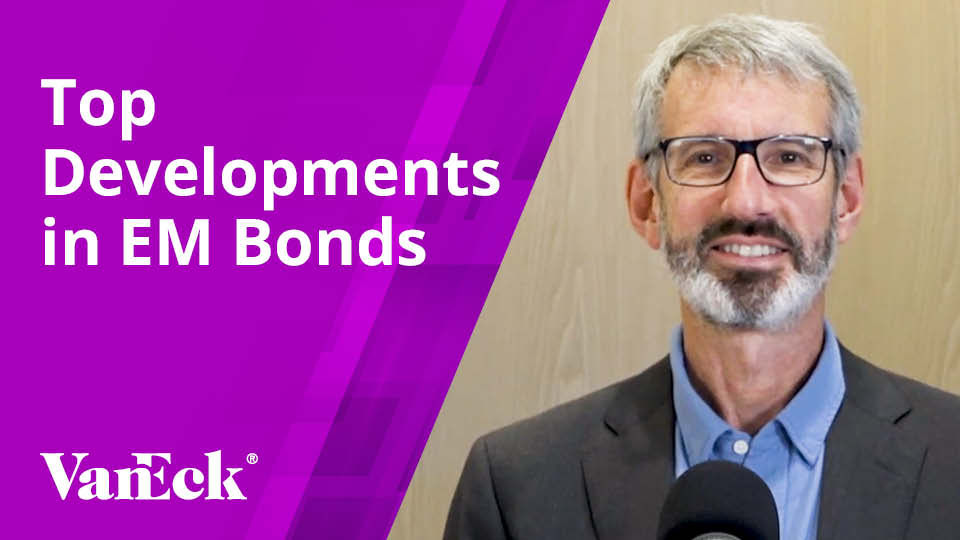The Electric Vehicle Revolution Charges Ahead
03 March 2021
The transition from conventional cars to electric vehicles (EVs) is accelerating, directly impacting auto makers and auto parts providers. This is creating investment opportunities in battery cell makers, charging infrastructure and charge stations, optimization software, as well as semiconductors, cameras, etc. We strongly believe this acceleration will continue, as stickier price parity between EV and fossil fuel autos is upon us and Wright’s Law1 continues to drive down EV costs – especially in the battery and battery software space. In our view, EV investing is a forward-looking, innovative and disruptive theme.
In this blog, we will explore:
- Growing EV demand, which is driving an accelerated conventional cars-to-EV transition and its hyper adoption globally.
- Two major inflections on the supply side—an EV-dedicated platform and technological innovation—that are driving EV penetration and adoption levels.
- Opportunities within the EV investment universe.
A Road to Platform Ecosystem – Key Investment Themes
Source: Macquarie Research. Data as of 8 September 2020.
Cracking the investment code across the vast and diffuse EV investment universe includes understanding complex global supply chains, competing standards, prevailing regulatory structures and national policy and subsidy decision making. The answer to “Do you invest in EV?” is staggering in its complexity and scope.
Based on years of research conducted across the Investment Teams for the VanEck Emerging Markets Equity Strategy (EME) and the VanEck Global Hard Assets Strategy (GHA), greater sustainability, cost optimization and more visible and persistent returns appear to reside in very specific parts of the value chain. These include static battery cells (EME holdings: Samsung SDI2 and LG Chem Ltd.3; GHA holding: Freyr4), storage software (GHA holding: Stem5), as well as infrastructure such as semiconductors and EV charge stations (EME holding: Qingdao TGOOD Electric Co. Ltd.6 and GHA holding: EVgo7).
Global EV Penetration: Unprecedented Levels, Groundbreaking Speeds
From a consumer preference, competitive unit pricing and regulatory perspective, conventional automobiles are becoming increasingly unwelcome across the world. This accelerating trend lifts demand, which helps add production scale, increasingly helping to drive down the cost of EV ownership to a level where the economic choice tilts in favor of EVs. In the past, the demand momentum was largely driven by the environmental concerns of the buyer, subsidies, as well as increasing performance and innovation.
Growing demand and supply innovations are driving an accelerated conventional cars-to-EV transition globally. In 2021, for the first time in history, we expect strong growth in EV sales in both China and EU, the two largest EV markets.
Global EV Penetration Forecast
Source: Morgan Stanley Research. Data as of February 2021.
EV Growth around the World
Source: EAAM, CAAM, EVinside, Macquarie Research. Data as of 15 December 2020.
Global government policy support for EV is growing. We have seen this through outright future regulatory elimination of conventional cars, coupled with supportive policies around EV subsidies and infrastructure. Given the boost from these initiatives, EV sales growth in China, for example, is likely to be in the region of 1.7M units next year (+31% YoY) and in the EU 1.9M units (+58% YoY).8
Here is an overview of the latest policy developments relating to EVs globally:
Source: Macquarie Research. Data as of 15 December 2020.
Battery innovation helps address bottlenecks. Other than price, in the past, the two biggest drawbacks for consumers has tended to be EV’s limited range and slow charging. Battery innovation is a potential solution for both of these demand bottlenecks, and offers an opportunity for investors to gain exposure to growing EV adoption.
Tier one battery manufacturers are key enablers of the electric revolution, and over recent years, they have formed a global oligopoly. Their commitment to research and development (R&D) and ever increasing manufacturing efficiency continues to result in improvements in the range, cost and safety of EVs. The EME Investment Team’s discussion with management and industry experts indicates that short-term battery performance will be driven by further optimization of cathode chemistry, silicon-carbon blended anodes and cell-to-pack (CTP) efficiency. While longer-term innovation will be found in solid state batteries and other next generation technologies, we are optimistic that Samsung SDI and LG Chem (EME holdings) will spearhead battery innovation over the next decade.
We strongly believe that EVs will be competitive when the time to charge them is as quick as filling a gas tank. Technology has advanced to a stage that a battery can now be partially charged very quickly, and we are very attracted to mass charging infrastructure. Helping to promote adoption, government policy is increasingly supporting funding alongside private investments toward buildout of the charging infrastructure. Capitalizing on the need by auto original equipment manufacturers (OEMs) to address the bottleneck limiting mass market adoption of their products are companies such as EVgo (GHA holding). EVgo builds and operates charging stalls and maintains nearly a 50% share in the public fast charging market in the U.S., with partnerships to support the upfront capex investment of their stations. In China and the U.S., scale and first-mover advantage are critical for companies to become regional leaders in high density areas – and payback of the infrastructure investment is also shorter and much faster.
Innovation extends beyond the cell. The value proposition for faster EV adoption extends beyond the cost of the battery itself and includes the battery manufacturing method, as well as energy management around EVs, batteries and the grid.
The number of models and types of EVs slated to come to market within the next five years currently outpaces battery manufacturing supply. Both Asian and European battery manufacturers are establishing regional supply chains closer to the European auto OEM and putting their own, unique spin on manufacturing. Freyr (GHA holding), coming public via merger with Alussa Energy, is establishing a presence in Norway to build chemistry-agnostic batteries using a production process 30% shorter than the conventional method. It will be powered by 100% renewable resources, addressing the longstanding debate of absolute emission impact around EV, from well to wheel.
While manufacturing and cell design are driving down battery cost, we are seeing an increasing focus from the industry toward behind-the-meter energy management. A standalone battery is used as energy backup, whereas a battery connected to the grid harnesses a much more efficient flow of two-way electricity usage that leverages utility rates with optimal time-of-use. Predictive analytics between the grid and battery results in a lower electricity rate, which is then translated into better economics for EV and battery owners. Stem (GHA holding), coming public via merger with Star Peak Energy, is a software platform that uses AI to optimize energy usage between commercial batteries and the grid. The software contributes to a meaningful reduction in monthly bills, and the customer data collected over time is then used toward better grid management for utilities.9 The ecosystem results in higher adoption of batteries, given the lower cost of ownership for the entire system.
Capacity needs are growing. The need for higher battery capacity to meet the fast-growing, global EV demand is another integral component in the EV supply chain and penetration efforts.
Strong Growth: Automotive Battery Demand Estimates
Source: IHS Global Insight, Goldman Sachs Global Investment Research. Data as of 24 September 2020.
Costs are decreasing. Lower battery costs (implicit in cell design, material, manufacturing, cell-to-vehicle production streamlining, etc.) should lead to an increase in overall capacity and further acceleration of EV adoption levels globally. Securing strategic domestic battery input materials is a high priority for governments around the world and is considered a vital aspect of driving down integrated battery manufacturing costs. As EVs and batteries proliferate, consumption of minerals such as copper, lithium, cobalt, manganese, rare earth metals and graphite are predicted to grow to exceptional levels. Existing mining firms (GHA holdings: First Quantum10 and MP Materials11) as well as numerous new players (GHA holdings: Euro Manganese12 and Piedmont Lithium13) are emerging to satisfy this demand, and additional geographically diverse suppliers are expected to come to market.
Battery Cost Composition and Cost Cutting
Source: Company Data, Goldman Sachs Global Investment Research. Data as of 24 September 2020.
Robust Outlook for EVs Globally
Looking forward, we expect the robust growth outlook for electric vehicles to continue globally. This is driven by growing EV demand coupled with the introduction of EV-dedicated platforms, new EV model launches, expanded production volume, continuous government policy support and new players entering the market. We expect China and Europe to drive the growth, with upside potential from the U.S.
Global EV Shipment Forecast
Source: Morgan Stanley Research. Data as of 4 January 2021.
1 Pioneered by Theodore Wright in 1936, Wright’s Law aims to provide a reliable framework for forecasting cost declines as a function of cumulative production. Specifically, it states that for every cumulative doubling of units produced, costs will fall by a constant percentage.
2 Samsung SDI is 2.81% of EME Strategy assets as of 31 January 2021.
3 LG Chem Ltd. is 0.99% of EME Strategy assets as of 31 January 2021.
4 Freyr, coming public via merger with Alussa Energy, 0.52% of GHA Strategy assets as of 31 January 2021.
5 Stem, coming public via merger with Star Peak Energy, 5.23% of GHA Strategy assets as of 31 January 2021.
6 Qingdao TGOOD Electric Co. Ltd. is 0.67% of EME Strategy assets as of 31 January 2021.
7 EVgo, coming public via merger with Climate Change CR Restricted, 0.91% of GHA Strategy assets as of 31 January 2021.
8 Source: Macquarie Research. Data as of 15 December 2020.
9 Company Data.
10 First Quantum is 4.19% of GHA Strategy assets as of 31 January 2021.
11 MP Materials is 0.25% of GHA Strategy assets as of 31 January 2021.
12 Euro Manganese is 0.08% of GHA Strategy assets as of 31 January 2021.
13 Piedmont Lithium is 0.43% of GHA Strategy assets as of 31 January 2021.
All asset percentages are as of 31 January 2021.
Important Disclosure
This is a marketing communication for professional investors only. Please refer to the UCITS prospectus and to the Key Investor Information Document (KIID) before making any final investment decisions.
This is a marketing communication for professional investors only. Please refer to the UCITS prospectus and to the Key Investor Information Document (KIID) before making any final investment decisions. This information originates from VanEck Securities UK Limited (FRN: 1002854), an Appointed Representative of Sturgeon Ventures LLP (FRN: 452811) which is authorised and regulated by the Financial Conduct Authority in the UK. The information is intended only to provide general and preliminary information to FCA regulated firms such as Independent Financial Advisors (IFAs) and Wealth Managers. Retail clients should not rely on any of the information provided and should seek assistance from an IFA for all investment guidance and advice. VanEck Securities UK Limited and its associated and affiliated companies (together “VanEck”) assume no liability with regards to any investment, divestment or retention decision taken by the investor on the basis of this information. The views and opinions expressed are those of the author(s) but not necessarily those of VanEck. Opinions are current as of the publication date and are subject to change with market conditions. Certain statements contained herein may constitute projections, forecasts and other forward-looking statements, which do not reflect actual results. Information provided by third party sources is believed to be reliable and have not been independently verified for accuracy or completeness and cannot be guaranteed. Brokerage or transaction fees may apply.
All performance information is based on historical data and does not predict future returns. Investing is subject to risk, including the possible loss of principal.
No part of this material may be reproduced in any form, or referred to in any other publication, without express written permission of VanEck.
© VanEck Securities UK Limited
Sign-up for our ETF newsletter
Related Insights
Related Insights
08 January 2025
06 August 2024
23 July 2024
16 April 2024
04 March 2024




